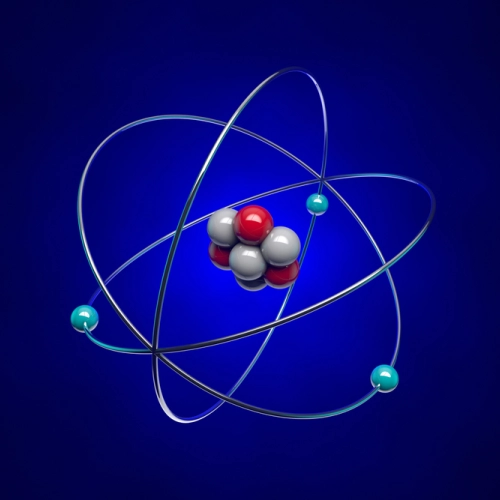
The chemical properties of materials are those that describe how a material interacts with other substances, particularly how its composition changes during chemical reactions.
These properties determine how materials behave in different environments, how they can be transformed, and their durability in practical applications.
Classification of chemical properties
The chemical properties of materials can be grouped into several key categories, which will be discussed in detail below:
- Chemical reactivity
- Thermal stability
- Corrosion and oxidation
- Acidity and basicity
- Inflammability
- Toxicity
- Solubility
- Electronegativity and electron affinity
- Ability to form bonds
1. Chemical reactivity
 Reactivity is the ability of a substance to participate in a chemical reaction. Reactivity may depend on factors such as concentration, temperature, and the presence of catalysts.
Reactivity is the ability of a substance to participate in a chemical reaction. Reactivity may depend on factors such as concentration, temperature, and the presence of catalysts.
Materials can be reactive or inert, and their reactivity is influenced by the atomic structure and binding energy of the atoms that compose them.
- Alkaline metals (such as sodium and potassium): They are highly reactive, especially with water, producing hydrogen and basic compounds.
- Noble gases (such as helium and argon): They are practically inert due to their stable electronic structure.
Reactivity is key in the manufacture of chemical compounds and in industrial applications. For example, in the production of ammonia, the reactivity of nitrogen with hydrogen is facilitated by the use of catalysts and high pressures.
Factors affecting reactivity:
- Ionization energy : The lower the ionization energy, the greater the tendency to lose electrons and participate in reactions.
- Atomic radius : Elements with larger atomic radii tend to be more reactive due to the lower attraction of electrons to the nucleus.
2. Thermal stability
The thermal stability of a material refers to its ability to resist chemical or physical changes when exposed to heat. Materials with high thermal stability do not easily decompose at high temperatures.
- Metal oxides : They have high thermal stability, which makes them useful in applications such as refractory coatings.
- Polymers : Many polymers thermally decompose at relatively low temperatures, limiting their use in high temperature applications.
Thermal stability is related to the strength of chemical bonds. In ionic compounds, such as sodium chloride, ionic bonds are very strong, giving them high thermal stability. On the other hand, covalent bonds in some organic materials are more susceptible to breaking when heat is applied.
3. Corrosion and oxidation
 Corrosion is the deterioration of a material, usually a metal, as a result of a chemical reaction with its environment. Oxidation is a form of corrosion that involves reaction with oxygen.
Corrosion is the deterioration of a material, usually a metal, as a result of a chemical reaction with its environment. Oxidation is a form of corrosion that involves reaction with oxygen.
- Iron : It oxidizes in the presence of air and water, forming iron oxide (Fe2O3), commonly known as "rust". This is an electrochemical reaction that weakens the structure of the metal.
- Aluminum : Although it oxidizes, it forms a layer of aluminum oxide (Al2O3) that is very stable and protects the metal from further corrosion.
Corrosion can negatively affect the durability and strength of materials. To prevent it, coatings are used, such as galvanization, where a protective layer of zinc is applied over the iron to prevent oxygen and water from reaching the surface of the metal.
Types of corrosion:
- Uniform corrosion : It occurs uniformly over the entire surface of the material.
- Galvanic corrosion : Occurs when two dissimilar metals are in contact in the presence of an electrolyte, leading to corrosion of the less noble metal.
4. Acidity and basicity
Acidity and basicity describe how a material interacts with other substances in terms of donating or accepting protons (H+). These properties are measured using the pH scale.
- Acids : Substances that release hydrogen ions in solution. For example, hydrochloric acid (HCl) dissociates completely in water, releasing H+ and Cl-.
- Bases : Substances that accept protons or release hydroxide ions (OH-). A common example is sodium hydroxide (NaOH).
The acidity or basicity of a material is important in solution chemistry and affects the solubility, reactivity, and behavior of materials in different environments.
5. Flammability
 Flammability is the ability of a material to ignite or burn in the presence of an ignition source.
Flammability is the ability of a material to ignite or burn in the presence of an ignition source.
Flammable materials can react rapidly with oxygen in the air, releasing heat and light.
- Fuels : Hydrocarbons, such as gasoline or propane, are highly flammable and are used as energy sources. The combustion of these materials generates carbon dioxide and water.
- Flame retardant materials : These materials are designed to resist combustion or retard the spread of flames, as is the case with some chemically treated polymers.
Flammability is a key consideration in building construction, vehicle design and protective clothing manufacturing.
6. Toxicity
Toxicity refers to the degree to which a material can cause harm to living organisms. Toxic substances can affect the human body through inhalation, ingestion, or skin contact.
- Lead : A toxic heavy metal that can cause neurological damage. Its use in paints and pipes has been severely restricted.
- Mercury : Another heavy metal that can bioaccumulate in the body and cause serious health problems.
Handling toxic materials requires special precautions, such as the use of personal protective equipment (PPE) and safe disposal procedures.
7. Solubility
Solubility is the ability of a material to dissolve in a solvent, usually water, although it can also refer to other solvents such as ethanol or acetone.
Solubility depends on the chemical nature of the solute and the solvent.
- Ionic salts : Like sodium chloride (NaCl), they are highly soluble in water due to the polarity of water which separates the ions.
- Nonpolar substances : Like oil, they are insoluble in water, but can dissolve in nonpolar solvents such as hexane.
Solubility is an important factor in many industrial processes, such as purification, extraction, and pharmaceutical manufacturing.
8. Electronegativity and electron affinity
Electronegativity is a measure of the tendency of an atom to attract electrons in a molecule.
Elements with high electronegativity, such as fluorine, tend to gain electrons during chemical reactions, while elements with low electronegativity, such as alkali metals, tend to lose electrons.
- Fluorine (F) : It is the most electronegative element and has a strong tendency to attract electrons.
- Cesium (Cs) : It has a low electronegativity, which means it tends to donate electrons in chemical reactions.
Electron affinity is a related property that describes the amount of energy released when a gaseous atom accepts an electron. Both concepts are key to understanding chemical bond formation and reactivity.
9. Ability to form bonds
 The ability of materials to form chemical bonds is one of their most important properties, as it defines their structure and physical properties. Bonds can be ionic, covalent or metallic.
The ability of materials to form chemical bonds is one of their most important properties, as it defines their structure and physical properties. Bonds can be ionic, covalent or metallic.
- Ionic bonds : These are formed between a metal and a non-metal when there is a transfer of electrons. A classic example is sodium chloride.
- Covalent bonds : They occur when two atoms share electrons, as in the case of water (H2O).
- Metallic bonds : Metals form a special type of bond where electrons are shared in a "cloud" of mobile electrons, giving them properties such as electrical and thermal conductivity.
The nature of the bond directly affects the mechanical, electrical, and thermal properties of materials. Compounds with ionic bonds typically have high melting points and are conductive in liquid or solution, while materials with covalent bonds may be more brittle and have lower melting points.